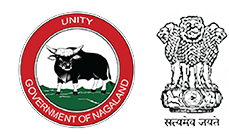‘Sapnon ki Udaan’ is an e-magazine, launched on 23rd August 2024 by the Department of School Education and Literacy, Ministry of Education and prepared by NCERT in collaboration with other autonomous institutions of the Ministry of Education. The e-magazine, disseminated through various portals of the MoE institutions, is a collaborative effort of the school eco-system of the country and addresses the students of all Indian schools. Objective of ‘Sapnon ki Udaan’ is to inculcate reading and writing and foster creative endeavour among the young citizens of the country through this e-magazine. Though ‘Sapnon ki Udaan’ is a bilingual e-magazine in Hindi and English, in future it aspires to be multi-lingual, where students can write in their own language.
a. Target Audience: The magazine is aimed at learners in the age group of 10 to 18 years, primarily in middle and secondary stages of school education.
b. Niche or Focus Areas: The magazine will focus on educational content with an emphasis on fostering curiosity, creativity, and critical thinking skills among children. It will cover a wide range of subjects including science, technology, current issues, literature, arts, and culture, tailored to the interests and cognitive levels of the target age group.
c. Overall Purpose, Tone, and Style: The magazine's purpose is to provide entertaining and educational content that engages children while expanding their knowledge and stimulating their imagination. The tone will be friendly and encouraging, aiming to inspire a love for learning. The style will blend informative, interactive, and visually appealing elements to attract young readers. The salient features of the e-magazine will be articles, essays, poem, travelogue, features, comic strips, satire etc.
d. Sources for Acquiring Content and Distribution: Content will be sourced from various stakeholders including students, teachers, staff members of educational institutions like NCERT, RIE, DMS, SCERT, DIET, NVS, KVS, NESTS, CBSE, School Educational Boards, all government and government aided and private schools, subject matter experts, and parents.
The broad theme for the upcoming issue will be “Education in the Journey of Viksit Bharat; your Dreams and Aspirations”, where main articles, features, and ideas are invited. However, other features like travelogue, poems, story, fiction etc. could be creative and imaginative as per the Guidelines given;
Features (articles) - 1500 to 2000 words
Travelogue - 1000 words maximum
Poem - 150-200 words maximum (for students and teachers)
Article
Story / fiction - 1000 -1200 words maximum
Practices, Innovative ideas, activities - 1500 words (By teacher educators, teachers or parents)
Current topics theme
Jokes, puzzles, riddles, fun facts, maze etc. have to be educational in addition to entertainment.
Illustrations, Photographs can be sent in original, with 300 dp resolution.
Life related anecdotes, education related with words limit- 1500 words
Features (Articles from Faculty Members):
Faculty members can contribute articles on various topics related to education, research, or personal experiences. Unlike regular news stories, features delve deep into the human experience, emotions, and storytelling to connect with readers on a personal level. They can cover various styles, such as human interest stories, lifestyle features, interview pieces, and more. If you’re writing one, remember to combine facts with opinions, use descriptive language, and create a strong narrative.
Travelogue:
Share your travel experiences, adventures, and insights. Engage readers with vivid descriptions and captivating narratives. A travelogue is a written account of a traveler’s experiences, often describing the destinations visited, the people encountered, and the cultural insights gained. It goes beyond mere factual reporting and combines storytelling with informative aspects of travel writing. Travelogues allow readers to explore the world through the eyes of the traveler, capturing the spirit of different locales and offering a taste of distant places from the comfort of their own homes. These narratives can be rich in emotional depth, historical context, or personal reflections.
Poem:
Express your creativity through poetry. Themes can vary from nature to emotions and beyond. It should not be satirical on politics, ethnicity of the country.
For Students (Article):
Students can write articles on academic subjects, personal growth, or any other relevant topic, which does not hurt our national sentiments.
Story/ Fiction:
Craft engaging fictional or non-fictional stories. Let your imagination flow! But not against the national sentiments!
Practices, Innovative Ideas, Activities:
Share innovative teaching practices, classroom activities, or educational ideas.
By Teachers or Parents:
Teachers and parents can contribute articles related to education, parenting, or school-related experiences.
Current Topics Theme:
Write about contemporary issues, trends, or events that impact education, society, or students.
Illustrations and Photographs:
Include original illustrations or photographs related to the theme, event at school or institution.
Anecdotes from real-life experiences can enhance your content.
Originality and Plagiarism: Originality is the hall mark of the magazine. The entire theme should be original, not copied or translated from any source. Plagiarism should be checked at school/Institution level.
Remember to adhere to these guidelines and contribute thoughtfully.
(DIPR)

